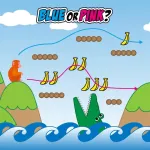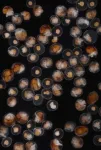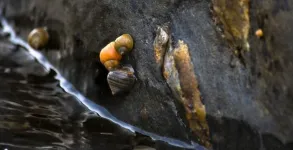(Press-News.org) As part of continued efforts to bolster the integrity of the scholarly record, the Science journals have partnered with Proofig AI image integrity software.
Adoption of Proofig AI positions authors to resolve image-related issues before a paper is published. It also ensures the highest standards of accuracy in work published in the six Science family journals.
“Rigorous data are a cornerstone of our publications,” said Valda Vinson, Executive Editor of Science. “Image manipulation and duplication – whether intentional or mistaken – impact trust in our content, and we are committed to preventing these issues, including by exploring innovative technologies that can assist our editors.”
Research content at the six Science family journals, published by the American Association for the Advancement of Science and spanning multiple disciplines, features a range of images – each of which contains valuable information in support of the related study. Image accuracy is critical.
Before a paper is published in any Science family journal, it goes through various checks, including those related to image integrity. But until recently, efforts to screen images have been largely manual and highly time-requisite.
In summer 2023, the Science journals began trialing Proofig AI on select manuscripts at the revision stage. Proofig AI can detect numerous types of the most common image integrity issues, including image manipulation and duplication, which may represent serious forms of misconduct. But even where duplication has occurred due to honest error, it still damages the integrity of the scholarly record, requiring corrective action.
“The ability to better detect image duplications is particularly helpful to our editorial team as duplications are hard to spot with the naked eye,” said Vinson.
Proofig AI’s filters – equipped with enhanced visualization techniques – flag image concerns for editors to investigate more thoroughly. Editors then determine how to proceed, seeking author clarification where necessary.
So far, some image issues discovered in papers at Science journals have required editors to contact authors to clear up matters such as mistaken duplications.
Authors have been appreciative of issues being caught before publication instead of after, where stakes can include need for a correction or retraction, or even reputational damage.
Proofig AI will be particularly critical at the journals as the Science family grows in volume, increasing the number of images requiring careful screening.
“It’s great to see how automating image integrity checks within publication workflows has already helped the Science family journals streamline their publication process prior to manuscript acceptance, ensuring the highest standards of integrity,” said Dror Kolodkin-Gal, Co-founder of Proofig AI. “Proofig empowers the editorial team to make swift and informed decisions. The utilization of our AI tool by such a prestigious publishing house may pave the way for additional publishers to ensure higher integrity assurance before publication. Altogether, this will benefit all parties involved – and the scientific community."
END
Focused on author support and research integrity, Science journals adopt Proofig software
The Science journals have partnered with Proofig AI image integrity software to further ensure the highest standards of accuracy in published work
2024-01-04
ELSE PRESS RELEASES FROM THIS DATE:
Lighting the circuits to risky decision-making
2024-01-04
Life consists of infinite possibilities — appearing in the real world as multiple choices, that then require decision-making in order to determine the best course of action. However, with every choice there also exists a certain amount of uncertainty or ‘risk’. Therefore, behind every decision, lies an intricate evaluation process that balances the ‘risks’ and ‘rewards’ associated with taking such actions. This can, in extreme cases, manifest itself as a pathological behavioral state of high risk-high return (HH) and low risk-low return (LL) decision processing that has been associated with gambling disorders.
Although ...
The snail or the egg?
2024-01-04
The egg did come first. Egg-laying arose deep in evolutionary time, long before animals even made their way onto land. Throughout evolution, there have been many independent transitions to live-bearing across the animal kingdom, including insects, fish, reptiles, and mammals. Yet, these examples have taught us very little about the number of genetic changes it takes to go from eggs to live offspring.
Now, an international team of researchers led by ISTA postdoc Sean Stankowski has used a humble marine snail to reveal the genetic changes that underpin the transition to live-bearing. The main advantage of investigating this phenomenon in ...
Human histories shape the global biodiversity data used to make future decisions
2024-01-04
Global biodiversity data used to make major policy and conservation investment decisions reflect legacies of social and political inequities. In a Policy Forum, Melissa Chapman and colleagues highlight this issue and its implications for global conservation policy and planning. The rapid rise of global biodiversity data repositories like the Global Biodiversity Information Facility (GBIF) – a data repository that synthesizes billions of species observations across the globe – has led to unprecedented insight into large-scale biodiversity patterns worldwide. Not only are ...
Studies reveal the evolutionary origin of unique traits in pitcher plants and marine snails
2024-01-04
In a pair of studies, researchers use different approaches to investigate how complex and innovative phenotypic traits evolve in plants and animals. “The amazing breadth of plant and animal diversity across the globe has evolved by circuitous paths, and resolving the complex history of genomes and traits unlocks new depths for understanding evolution,” writes Kathryn Elmer in a related Perspective. Although biological traits are constantly changing in populations, the emergence of a trait ...
Anti-CTLA-4 nanobodies promote antitumor immunity without inducing colitis in mice
2024-01-04
Microbiota-reactive T cells trigger colitis in mice harboring the microbiota of wild-caught mice following CTLA-4 blockade, according to a new study that reveals a major mechanism by which anti-CTLA-4 antibodies induce inflammatory toxicities during antitumor immune checkpoint inhibitor therapies. The findings could advance the development of next-generation CTLA-4 inhibitors that promote antitumor immune responses without triggering intestinal disease. Cancer immunotherapies with immune checkpoint inhibitors are widely used to promote antitumor immune responses in a range of human cancers. However, they can also lead to inflammatory ...
Editorial: Genuine images in 2024
2024-01-04
In an Editorial, Science Journals’ Editor-in-Chief, Holden Thorp, outlines changes to the publication’s editorial policies and practices for 2024, including plans to adopt the use of Proofig – an artificial intelligence-powered image-analysis tool – to detect altered images across all six of the Science family journals. Proofig is a tool that screens images for duplication and other types of manipulations. Although Science has been conducting “human-eye” image checks on some papers, the new tool will enhance Science’s review process and reduce ...
Biologists uncover the secrets of evolutionary change
2024-01-04
**Strictly embargoed until 19:00 GMT on Thursday 4 January 2024**
Biologists uncover the secrets of evolutionary change
Images available here
Big evolutionary changes happen gradually and not in giant leaps, a team of biologists led by the University of Sheffield have discovered
Using new methodology to study an evolutionary shift in the birthing style of marine snails, experts have been able to answer the long-debated question as to how game-changing innovations like flight, vision, and the bearing of live offspring happened
Understanding the evolutionary origin of these developments is important because ...
Does self-checkout impact grocery store loyalty?
2024-01-04
In an effort to reduce costs and improve customer satisfaction, retailers have implemented self-checkouts in stores across the country. They have become increasingly popular, but some brands like Walmart are removing self-checkouts in some locations while adding more in others. There are many advantages and disadvantages of self-checkout for both the customer and the retailer, but little formal research has investigated the impact of self-checkout on customers’ shopping experience. This led researchers from Drexel University’s LeBow College of Business to look at how self-checkout systems in grocery stores influence customer loyalty ...
Nanoparticle transport across the blood brain barrier increases with Alzheimer’s and age, study finds
2024-01-04
Neurodegenerative disorders such as Alzheimer’s disease affect more than 270 million people worldwide. AD is the leading cause of dementia, resulting in memory loss due to atrophy of neurons in the hippocampus, which is the part of the brain that regulates learning and memory. Nanoparticles designed to carry drugs have emerged as a strategy for treating different diseases, but in the context of neurodegenerative disease, much of the research has focused on developing strategies for getting nanoparticles across the blood brain barrier and into targeted regions of the brain.
In a new study, an interdisciplinary team of researchers at the University of Illinois Urbana-Champaign ...
Recent advances in medical applications of nanoparticles
2024-01-04
Nanoparticles have become an essential part of medicine, from aiding in diagnostic tests to serving as immunotherapy agents and more. Thanks to their ultrasmall size — around the thickness of a strand of DNA — these particles are adept at getting inside tissues and targeting precise areas. Here are three recent papers published in ACS journals that could expand the beneficial uses for nanoparticles, based on results in rats. The technology could be used to improve contraceptive methods, burn creams and arthritis ...
LAST 30 PRESS RELEASES:
Tracing the quick synthesis of an industrially important catalyst
New software sheds light on cancer’s hidden genetic networks
UT Health San Antonio awarded $3 million in CPRIT grants to bolster cancer research and prevention efforts in South Texas
Third symposium spotlights global challenge of new contaminants in China’s fight against pollution
From straw to soil harmony: International team reveals how biochar supercharges carbon-smart farming
Myeloma: How AI is redrawing the map of cancer care
Manhattan E. Charurat, Ph.D., MHS invested as the Homer and Martha Gudelsky Distinguished Professor in Medicine at the University of Maryland School of Medicine
Insilico Medicine’s Pharma.AI Q4 Winter Launch Recap: Revolutionizing drug discovery with cutting-edge AI innovations, accelerating the path to pharmaceutical superintelligence
Nanoplastics have diet-dependent impacts on digestive system health
Brain neuron death occurs throughout life and increases with age, a natural human protein drug may halt neuron death in Alzheimer’s disease
SPIE and CLP announce the recipients of the 2025 Advanced Photonics Young Innovator Award
Lessons from the Caldor Fire’s Christmas Valley ‘Miracle’
Ant societies rose by trading individual protection for collective power
Research reveals how ancient viral DNA shapes early embryonic development
A molecular gatekeeper that controls protein synthesis
New ‘cloaking device’ concept to shield sensitive tech from magnetic fields
Researchers show impact of mountain building and climate change on alpine biodiversity
Study models the transition from Neanderthals to modern humans in Europe
University of Phoenix College of Doctoral Studies releases white paper on AI-driven skilling to reduce burnout and restore worker autonomy
AIs fail at the game of visual “telephone”
The levers for a sustainable food system
Potential changes in US homelessness by ending federal support for housing first programs
Vulnerability of large language models to prompt injection when providing medical advice
Researchers develop new system for high-energy-density, long-life, multi-electron transfer bromine-based flow batteries
Ending federal support for housing first programs could increase U.S. homelessness by 5% in one year, new JAMA study finds
New research uncovers molecular ‘safety switch’ shielding cancers from immune attack
Bacteria resisting viral infection can still sink carbon to ocean floor
Younger biological age may increase depression risk in older women during COVID-19
Bharat Innovates 2026 National Basecamp Showcases India’s Most Promising Deep-Tech Ventures
Here’s what determines whether your income level rises or falls
[Press-News.org] Focused on author support and research integrity, Science journals adopt Proofig softwareThe Science journals have partnered with Proofig AI image integrity software to further ensure the highest standards of accuracy in published work



